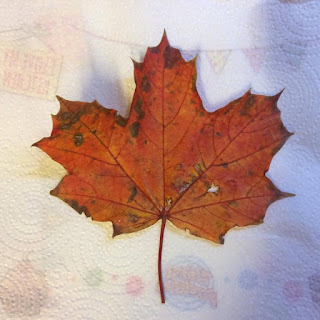Whilst I was waiting for the crystals on the leaves to develop, I decided to give artificial materials one last chance.
The pom poms worked well, but ultimately they had no impact on the viewer. I wondered if using pipe cleaners (a material similar to pom poms, only malleable) would have any different effect.
I wanted to experiment with using interesting shapes. I could twist the pipe cleaners into any formation that I wanted, which gave me much more freedom than the pom-poms and plates did.
I also had much more variation of colour, which I enjoyed as I intended for the colours to show through the translucent crystals.
I followed the usual steps for creating crystals. I used cotton thread to suspend the pipe cleaner formations in a saturated borax solution, and left them to "develop" for around 20 hours.
These are the results of the pipe cleaners having been freshly removed from the cups.
There were obvious variations in crystal growth.
Some of the pipe cleaners were completely engulfed in crystals, where others had raw patches which made the entire piece incredibly delicate.
They crumbled easily. I think it may have had something to do with the amount of borax I was using. I may have filled the cups unevenly to try and save borax.
This result could be classed as a failure, as it did not grow crystals in the way that I wanted it to. But regardless, I like it. I think that the wet fibres make the pipe cleaner look like a blue, frozen rose.
The results below are my favourites.
I feel that this "O" shaped pipe cleaner grew the most successful crystals. It came the closest to what I was trying to achieve, which was an even coverage of crystals.
It is not perfect, but it is strongly covered and quite solid. I love how the colours show through the gaps and translucent crystals.
It reminds me strongly of an amethyst geode.
Photograph by John Betts
In terms of a presentable piece, the result below is most likely the best.
Once again, this piece reminds me of a Geode.
I think I must have overloaded this cup with borax, as the white segment at the bottom is PURE, SOLID crystal. It creates a stand and a holder for the crystallised pipe cleaner, which is perfect. The pipe cleaner itself is completely solid with crystals. There are barely any gaps at all.
This result is probably the most SUCCESSFUL, but perhaps not my favourite. I think the fact that is is red is letting it down for me. Bright red seems unfitting for something so delicate. I much prefer the purple crystal "geode", as I find it appears more natural, and more "mystical".
Red to me speaks anger and passion, neither of which I am trying to convey here.
I wondered if editing the photo would change my views.
In fact, I prefer the piece much better in black and white. It reminds me of clear quartz, and allows you to focus on the formations of the crystals rather than the vivid, obnoxious colour.
I wonder if there is any way I could alter the colour of the physical piece.
REVIEW:
I was unsure of how this experiment would carry out, considering I was not a fan of the past few artificial experiments I carried out.
I was pleasantly surprised with these results, but even still, I do not think it is something I will pursue.
The results of these experiments are pretty, and they are pleasing to look at. But they hold no impact, create no discussion, and leave no room for interpretation. At least, not for me. They are not interesting to me. Just pretty.
I do not intend to work with unnatural materials again for a while, but the experience of experimenting was valuable.
I learned to find a biting point between too much and too little borax, which will be important to know for later experiments.





























































